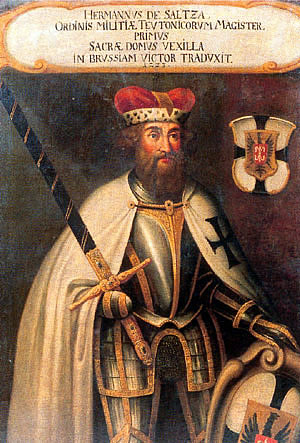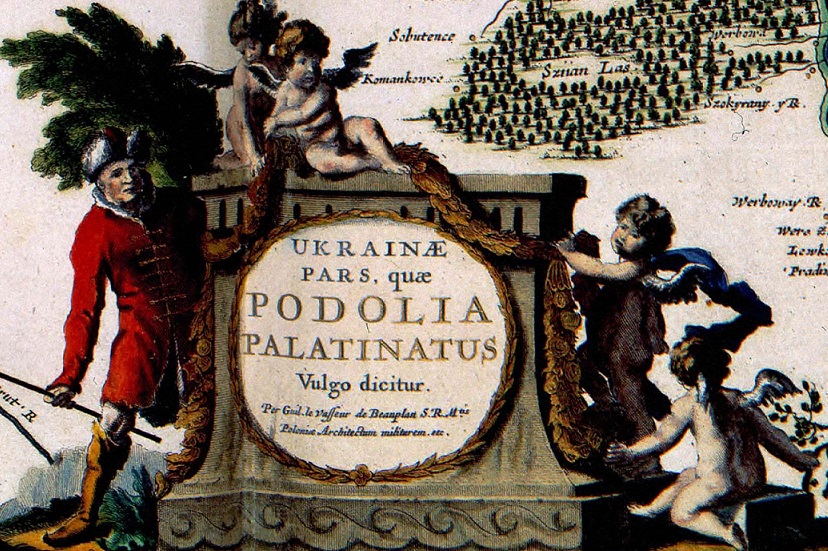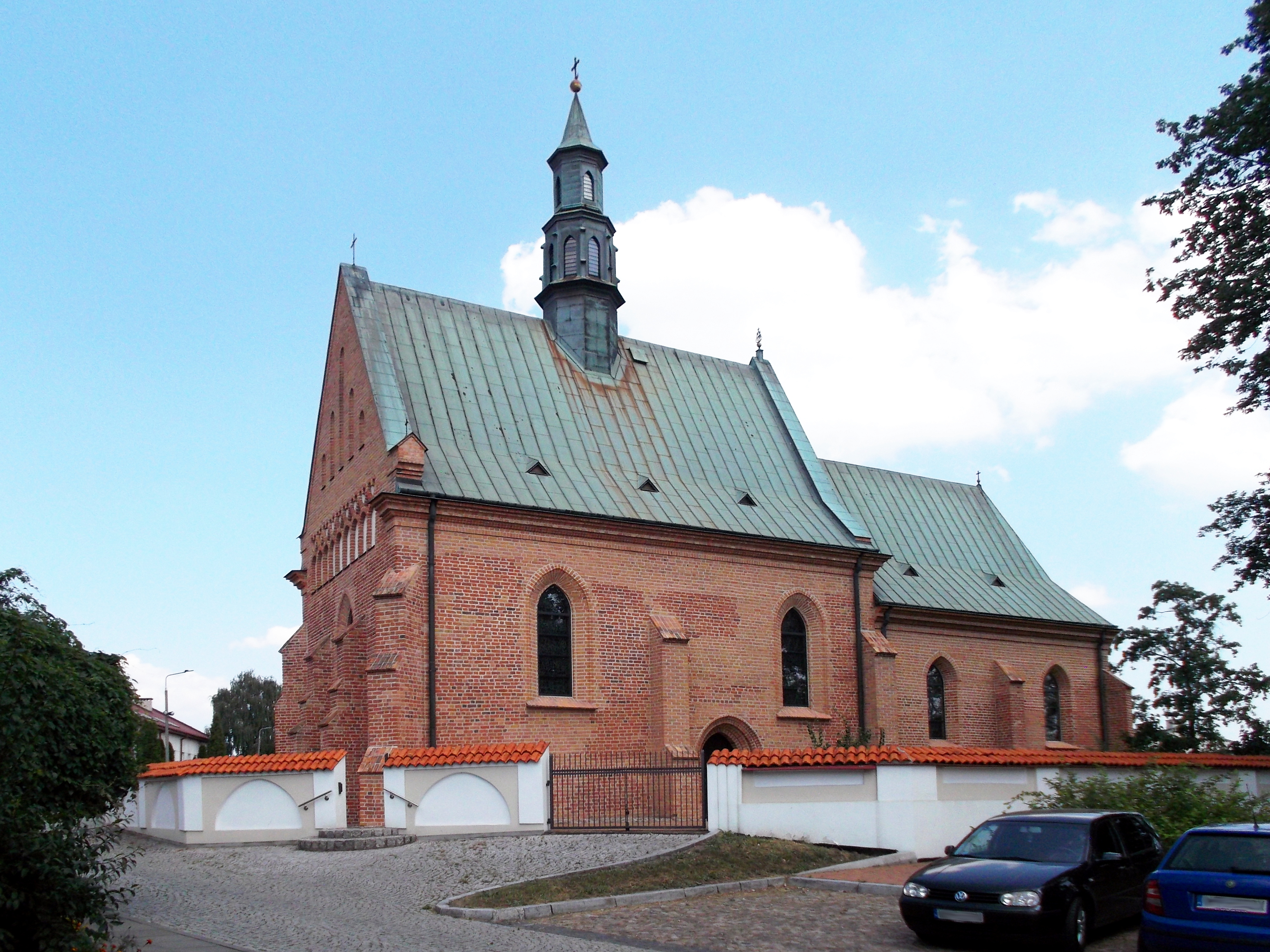|
Johann Von Tiefen
Johann von Tiefen (died 25 August 1497) was the 35th Grand Master of the Teutonic Knights, serving from 1489 to 1497. Von Tiefen's date of birth is unknown, although it is believed he hailed from Switzerland. His beginnings in the Teutonic Order start in Elbing, where he was the right-hand man of the Grand Hospitaller, Heinrich Reuß von Plauen. In 1474 he became the Komtur of Memel and two years later, the Grand Komtur. He represented the Teutonic Order on several diplomatic missions to many European courts. During the times of Grand Master Martin Truchseß von Wetzhausen, von Tiefen tried to release the pressure between the Teutonic Order and the Kingdom of Poland. In 1480 he became the Komtur of Brandenburg (Frisches Haff) and the Grand Hospitaller of the Order. On June 25, 1487, von Tiefen issued a charter in Drengfurt to establish a church in Alt Jucha. In 1489 the Order's Capitulum named von Tiefen Grand Master. Immediately after being elected, he went to Poland and ... [...More Info...] [...Related Items...] OR: [Wikipedia] [Google] [Baidu] |
Grand Masters Of The Teutonic Knights
The Grand Master of the Teutonic Order (german: Hochmeister des Deutschen Ordens; la, Magister generalis Ordo Teutonicus) is the supreme head of the Teutonic Order. It is equivalent to the Grand master (order), grand master of other Military order (religious society), military orders and the superior general in non-military Religious order (Catholic), Roman Catholic religious orders. ''Hochmeister'', literally "high master", is only used in reference to the Teutonic Order, as ''Großmeister'' ("grand master") is used in German to refer to the leaders of other orders of knighthood. An early version of the full title in Latin was ''Magister Hospitalis Sanctae Mariae Alemanni, Alemannorum Hierosolymitani''. Since 1216, the full title ''Magister Hospitalis Domus Sanctae Mariae Teutons, Teutonicorum Hierosolymitani'' ("Master of the Hospital House of the Blessed Virgin Mary of the Germans of Jerusalem") was used. The offices of ''Hochmeister'' and ''Deutschmeister'' (''Magister Ge ... [...More Info...] [...Related Items...] OR: [Wikipedia] [Google] [Baidu] |
Stare Juchy
Stare Juchy (german: Alt Jucha) is a village in Ełk County, Warmian-Masurian Voivodeship, in northern Poland. It is the seat of the gmina (administrative district) called Gmina Stare Juchy. It lies approximately north-west of Ełk and east of the regional capital Olsztyn Olsztyn ( , ; german: Allenstein ; Old Prussian: ''Alnāsteini'' * Latin: ''Allenstenium'', ''Holstin'') is a city on the Łyna River in northern Poland. It is the capital of the Warmian-Masurian Voivodeship, and is a city with county rights. .... The village has a population of 1,800. References Stare Juchy {{Ełk-geo-stub ... [...More Info...] [...Related Items...] OR: [Wikipedia] [Google] [Baidu] |
Podolia
Podolia or Podilia ( uk, Поділля, Podillia, ; russian: Подолье, Podolye; ro, Podolia; pl, Podole; german: Podolien; be, Падолле, Padollie; lt, Podolė), is a historic region in Eastern Europe, located in the west-central and south-western parts of Ukraine and in northeastern Moldova (i.e. northern Transnistria). The name derives from Old Slavic ''po'', meaning "by/next to/along" and ''dol'', "valley" (see dale). Geography The area is part of the vast East European Plain, confined by the Dniester River and the Carpathian arc in the southwest. It comprises an area of about , extending for from northwest to southeast on the left bank of the Dniester. In the same direction run two ranges of relatively low hills separated by the Southern Bug, ramifications of the Avratynsk heights. The Podolian Upland, an elongated, up to high plateau stretches from the Western and Southern Bug rivers to the Dniester, and includes hill countries and mountainous regions ... [...More Info...] [...Related Items...] OR: [Wikipedia] [Google] [Baidu] |
Prussia (region)
Prussia (Old Prussian: ''Prūsa''; german: Preußen; lt, Prūsija; pl, Prusy; russian: Пруссия, tr=Prussiya, ''/Prussia/Borussia'') is a historical region in Europe on the south-eastern coast of the Baltic Sea, that ranges from the Vistula delta in the west to the end of the Curonian Spit in the east and extends inland as far as Masuria. Tacitus's ''Germania'' (98 AD) is the oldest known record of an eyewitness account on the territory and its inhabitants. Pliny the Elder had already confirmed that the Romans had navigated into the waters beyond the ''Cimbric peninsula'' (Jutland). Suiones, Sitones, Goths and other Germanic people had temporarily settled to the east and west of the Vistula River during the Migration Period, adjacent to the Aesti, who lived further to the east. Overview The region's inhabitants of the Middle Ages have first been called ''Bruzi'' in the brief text of the Bavarian Geographer and since been referred to as Old Prussians, who, beginning in ... [...More Info...] [...Related Items...] OR: [Wikipedia] [Google] [Baidu] |
John I Albert Of Poland
John I Albert ( pl, Jan I Olbracht; 27 December 1459 – 17 June 1501) was King of Poland from 1492 until his death in 1501 and Duke of Głogów (Glogau) from 1491 to 1498. He was the fourth Polish sovereign from the Jagiellonian dynasty, the son of Casimir IV and his wife Elizabeth of Austria. As a kin to the House of Habsburg, John Albert was groomed to become emperor in the Holy Roman Empire, a plan which ultimately failed. He was well-educated and tutored by scholars such as Johannes Longinus and Callimachus, whom he subsequently befriended. Heavily influenced by the Italian Renaissance, John sought to strengthen royal authority at the expense of the Catholic Church and the clergy. In 1487, he led a force against the Ottoman Empire and defeated the Tatars of the Crimean Khanate during the early phase of the Polish–Ottoman War. In the aftermath of the Bohemian–Hungarian War, John unsuccessfully attempted to usurp Hungary from his elder brother Vladislaus but was inst ... [...More Info...] [...Related Items...] OR: [Wikipedia] [Google] [Baidu] |
Czerniki
Czerniki is a village in the administrative district of Gmina Stara Kiszewa, within Kościerzyna County, Pomeranian Voivodeship, in northern Poland. It lies approximately north-east of Stara Kiszewa, south-east of Kościerzyna, and south-west of the regional capital Gdańsk. German operatic bass Hermann Thomaschek (1824–1910) was born in the village For details of the history of the region, see History of Pomerania The history of Pomerania starts shortly before 1000 AD with ongoing conquests by newly arrived Polans rulers. Before that, the area was recorded nearly 2000 years ago as Germania, and in modern-day times Pomerania is split between Germany and Pol .... References Czerniki {{Kościerzyna-geo-stub ... [...More Info...] [...Related Items...] OR: [Wikipedia] [Google] [Baidu] |
Sterławki Wielkie
Sterławki Wielkie (german: Groß Stürlack) is a village in the administrative district of Gmina Ryn, within Giżycko County, Warmian-Masurian Voivodeship, in northeastern Poland. It lies approximately 10 km (6 mi.) north of Ryn, 12 km (7 mi.) west of Giżycko and 76 km (47 mi.) east of the regional capital, Olsztyn. History Groß Stürlack was founded in 1387 by the Teutonic Knights (German Order). The town was burned down during an invasion of East Prussia by the Crimean Tatars in 1656, but was recovered by the Germans in 1661. By 1811 Groß Stürlack was a village numbering 48 houses with a population of 411. In 1874 it became a German administrative town (''Amtsdorf'') belonging to the district of Lötzen (now Giżycko, Poland), which it remained until the border changes of 1945. In 1910, four years before the outbreak of World War I, Groß Stürlack was home to 877 residents. After the war, on July 11, 1920, the East Prussian plebiscite, mandated by the Versailles Treaty, ... [...More Info...] [...Related Items...] OR: [Wikipedia] [Google] [Baidu] |
John The Baptist
John the Baptist or , , or , ;Wetterau, Bruce. ''World history''. New York: Henry Holt and Company. 1994. syc, ܝܘܿܚܲܢܵܢ ܡܲܥܡܕ݂ܵܢܵܐ, Yoḥanān Maʿmḏānā; he, יוחנן המטביל, Yohanān HaMatbil; la, Ioannes Baptista; cop, ⲓⲱⲁⲛⲛⲏⲥ ⲡⲓⲡⲣⲟⲇⲣⲟⲙⲟⲥ or ; ar, يوحنا المعمدان; myz, ࡉࡅࡄࡀࡍࡀ ࡌࡀࡑࡁࡀࡍࡀ, Iuhana Maṣbana. The name "John" is the Anglicized form, via French, Latin and then Greek, of the Hebrew, "Yochanan", which means "YHWH is gracious"., group="note" ( – ) was a mission preacher active in the area of Jordan River in the early 1st century AD. He is also known as John the Forerunner in Christianity, John the Immerser in some Baptist Christian traditions, and Prophet Yahya in Islam. He is sometimes alternatively referred to as John the Baptiser. John is mentioned by the Roman Jewish historian Josephus and he is revered as a major religious figure Funk, Robert W. & the Jes ... [...More Info...] [...Related Items...] OR: [Wikipedia] [Google] [Baidu] |
Consecrate
Consecration is the solemn dedication to a special purpose or service. The word ''consecration'' literally means "association with the sacred". Persons, places, or things can be consecrated, and the term is used in various ways by different groups. The origin of the word comes from the Latin stem ''consecrat'', which means dedicated, devoted, and sacred. A synonym for consecration is sanctification; its antonym is desecration. Buddhism Images of the Buddha and bodhisattvas are ceremonially consecrated in a broad range of Buddhist rituals that vary depending on the Buddhist traditions. Buddhābhiseka is a Pali and Sanskrit term referring to these consecration rituals. Christianity In Christianity, consecration means "setting apart" a person, as well as a building or object, for God. Among some Christian denominations there is a complementary service of "deconsecration", to remove a consecrated place of its sacred character in preparation for either demolition or sale for sec ... [...More Info...] [...Related Items...] OR: [Wikipedia] [Google] [Baidu] |
Bishop Of Warmia
This is a list of Bishops and Prince-Bishops of the Diocese of Warmia ( pl, link=no, Diecezja warmińska, la, link=no, Dioecesis Varmiensis, german: link=no, Bistum Ermland), which was elevated to the Archdiocese of Warmia in 1992. The Bishopric was founded in 1243 as the Bishopric of Ermland, one of four bishoprics of Teutonic Prussia. In 1356 it became an Imperial Prince-Bishopric under Emperor Charles IV, and from 1512 until 1930 it was an exempt diocese. From 1947 to 1972 the episcopal see was left vacant following the expulsion of the German population and the Bishop of Ermland from Prussia. The cathedral capitular canons elected capitular vicars for the time sede vacante, recognised by the Holy See. In 1972 the Holy See installed a new Polish diocese, which in 1992 was elevated to an archdiocese. Bishops of Ermland / Warmia *1249–1250 Heinrich von Strateich, elected, never actually took office *1250–1274 Anselm of Meissen, first actual bishop to be active in ... [...More Info...] [...Related Items...] OR: [Wikipedia] [Google] [Baidu] |
Lucas Watzenrode The Younger
Lucas Watzenrode the Younger (sometimes ''Watzelrode'' and ''Waisselrod''; german: Lucas Watzenrode der Jüngere; pl, Łukasz Watzenrode; 30 October 1447 – 29 March 1512) was Prince-Bishop of Warmia (Ermland) and patron to his nephew, astronomer Nicolaus Copernicus. Early life The family and its name stemmed from the Silesian village of Weizenrodau, now Pszenno. Watzenrode was born in Thorn (Toruń), son of the merchant Lucas Watzenrode the Elder (1400–62). He studied at Jagiellonian University, and at the universities of Cologne and Bologna. After his sister Barbara and her husband Niklas Koppernigk died circa 1483, Lucas cared for their four children, Katharina, Barbara, Andreas and Nicolaus, the last of whom would become known as astronomer Nicolaus Copernicus. Historic background The Bishopric of Warmia, previously part of the Monastic State of the Teutonic Knights, had, with the Second Peace of Thorn (1466), come under the protection of the King of Poland. Ba ... [...More Info...] [...Related Items...] OR: [Wikipedia] [Google] [Baidu] |
Radom
Radom is a city in east-central Poland, located approximately south of the capital, Warsaw. It is situated on the Mleczna River in the Masovian Voivodeship (since 1999), having previously been the seat of a separate Radom Voivodeship (1975–1998). Radom is the fourteenth-largest city in Poland and the second-largest in its province with a population of 206,946 as of 2021. For centuries, Radom was part of the Sandomierz Province of the Kingdom of Poland and the later Polish–Lithuanian Commonwealth. Despite being part of the Masovian Voivodeship, the city historically belongs to Lesser Poland. It was a significant center of administration, having served as seat of the Crown Council which ratified the Pact of Vilnius and Radom between Lithuania and Poland in 1401. The Nihil novi and Łaski's Statute were adopted by the Sejm at Radom's Royal Castle in 1505. In 1976, it was a center of the June 1976 protests. The city is home to the biennial Radom Air Show, the largest air sho ... [...More Info...] [...Related Items...] OR: [Wikipedia] [Google] [Baidu] |







